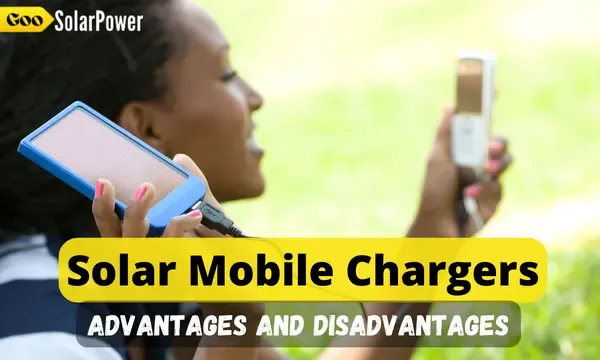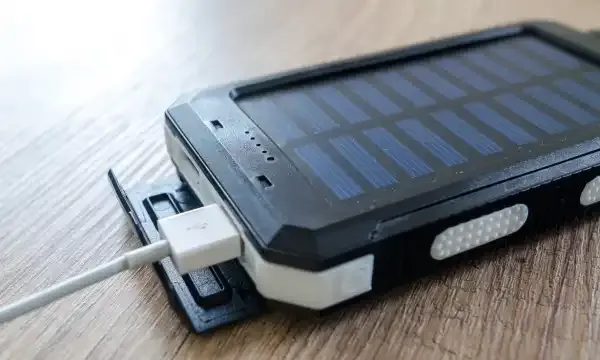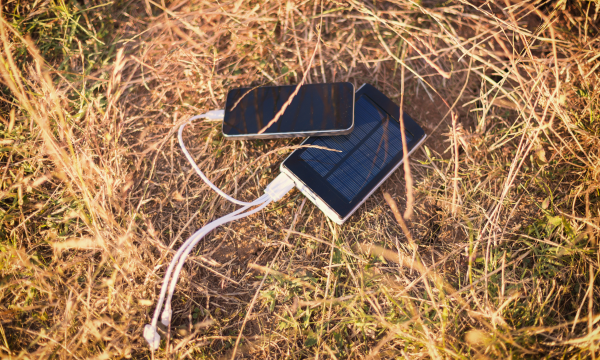Advantages and Disadvantages of Solar Mobile Chargers

Solar energy technologies have greatly advanced over the past decades, making their use possible in many applications, including mobile phone chargers. Solar chargers are used where there are no readily available electrical sources, such as on road trips or camping trips, or in emergency situations when the electrical grid fails.
What is A Solar Mobile Charger?
A solar mobile charger is a device that utilizes solar energy to charge a mobile phone's battery. The charger consists of a solar panel that converts sunlight into electricity, which is used to charge a rechargeable battery. This battery can then be used to charge a mobile phone when needed.
This means that you can charge your phone even when there is no sun. It is important to note that the battery capacity of the charger depends on the size of the solar panel used to recharge it. A larger solar panel will be able to generate more electricity and recharge the battery more quickly, allowing for faster charging times and longer battery life.
It's a good idea to choose a portable solar charger with a solar panel that best suits your needs, depending on how often and how fast you need to charge your phone.
Solar cell phone chargers are portable devices that are lightweight and durable. So it's easy to take with you on trips.
How do they Work?
Solar chargers typically use a flexible solar panel that can be easily folded or rolled up for storage. It consists of photovoltaic cells designed to absorb sunlight and convert it into electrical energy. These solar panels are usually made of materials such as silicon or thin films.
- It's a mini off-grid solar power system!
Benefits of Solar Mobile Chargers
- Portability: Solar chargers are compact and easy to carry, making them ideal for outdoor activities such as camping, hiking, or backpacking. They can be easily attached to backpacks, tents, or other gear for convenient charging on the go without worrying about their weight.
- Cost-effective: Once you've purchased a solar mobile charger, you won't have to pay for electricity to charge your devices. This can save you money over time, especially if you use your charger frequently.
- Renewable Energy: The charger uses energy from the sun, which is a renewable and sustainable energy source. don’t emit any harmful chemicals while charging.
- Easy to use: You simply need to place them in the sun to start charging your devices. Some models even come with built-in batteries, so you can charge your devices even when the sun isn't shining.
Overall, solar mobile chargers offer a convenient, cost-effective, and environmentally friendly way to keep your devices charged and powered on the go.
But there is a cost involved in purchasing this. It can be described as an investment. This is because it does not require any subsequent costs. It is also a profitable eco-friendly investment.
Disadvantages of Solar Mobile Chargers
Despite the availability of solar-powered phone chargers in the market, many people do not use it. That is another question that arises for you. There are several reasons for this.
- Although solar phone chargers are useful and effective during the summer and in areas that enjoy continuous sun, they may not be so in the winter or in areas that witness dark and rainy days.
- The charging capacity of a solar phone charger depends on the size and efficiency of the solar panel. In general, if the solar panel is larger and more efficient, it will generate more electricity, and be able to charge the phone more quickly. A smaller and cheaper board (lower efficiency) will make phones charge slower.
- One of the main reasons for this is that your standard charger is cheaper than this charger. Despite the advantages of technology, people are still tempted to buy cheap or inexpensive things. So these solar chargers are not widely used by people because of this reason.
NOTE – If you are thinking of buying a solar mobile charger, always try to buy a high-quality charger. You can avoid some above disadvantages by using a good charger even if it costs more than low quality charger. If you use a good solar charger, you can charge your phone faster on normal sunny days, and also as an extra advantage, you can charge your phone on rainy day or winter season.
How can we choose the best solar phone charger?
The best way you can find it is to browse the internet and find it. So we can buy it from using people’s experience (reviews) and by looking at efficiency.
But if you going to buy it from physical shops, you can only see the exterior of the product. So It is not possible to know the experience and efficiency of the product. So it is wise to buy such a technical item by using the internet.
The best solar charger for adventure trip or camper
If you are going on an adventure or camping, the solar charger that suits you is BigBlue’s. This is because it can charge your phone even when you are in a low sunlight area. It is made up of several panels and is enough to charge your phone more than once.
The best solar charger for use in normal life
BLAVOR is the best solar charger for charging your phone in your daily life. This is because it is easy to carry and can be purchased at a relatively low price. But it’s not powerful enough to use for camping or other adventure trips.
Conclusion
Running out of your phone's battery life is stressful, especially if you rely on your phone for communication, navigation, or if you're in an emergency and need to call for help.
When you go on a picnic, hike, or camp in the woods, your phone battery will almost certainly die. Then there is no way to charge it. Then you will have to face various problems. But you can charge your phone without any difficulty if you have a solar charger.
A solar portable charger can be a great solution to this problem, as it allows you to recharge your phone battery using the energy of the sun, no matter where you are.
In recent years, solar chargers have grown in popularity and become an everyday essential for outdoor enthusiasts, travelers, and anyone who spends a lot of time away from conventional energy sources.



